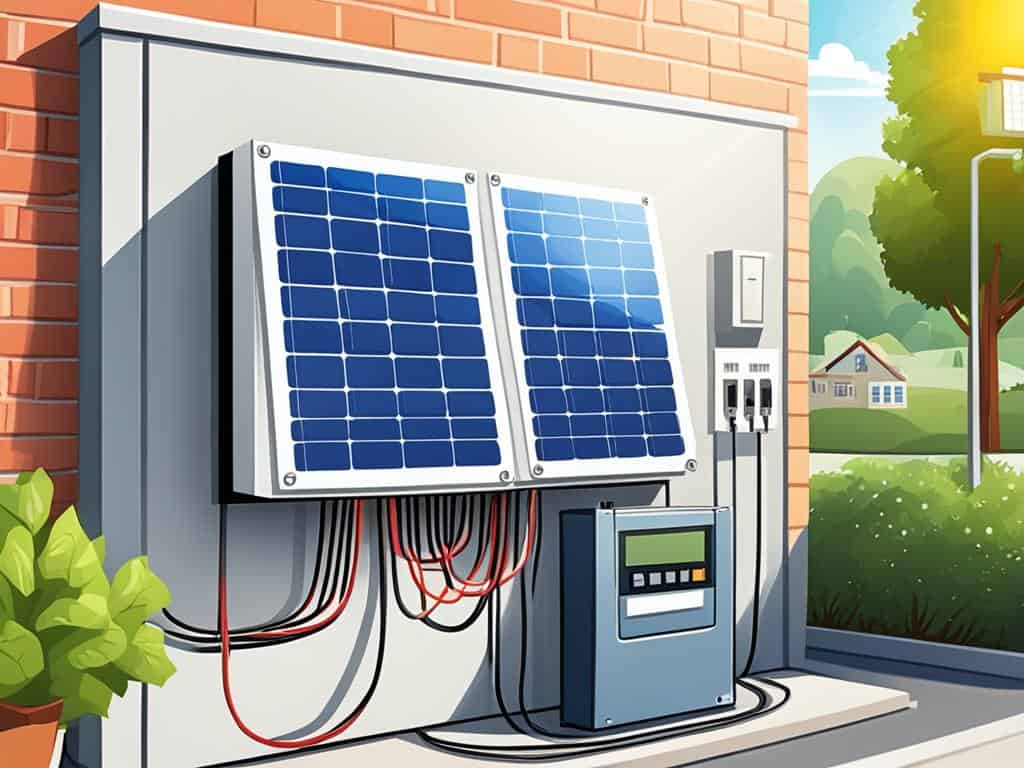
What are the Advantages of a Split-Phase Inverter?
As solar power adoption continues to rise across the USA, homeowners are searching for more efficient and reliable inverter systems to optimize energy usage.
One of the most innovative and practical solutions for residential solar setups is the split-phase inverter. But what exactly are its advantages, and why is it preferred for home installations? Let’s break it down in simple terms.
What Is a Split-Phase Inverter?

A split-phase inverter converts DC power from solar panels into AC power for home use. What makes it unique is its dual-voltage output, typically 120/240V allowing it to run both low-power and high-power appliances simultaneously.
In the USA, most homes use a split-phase electrical system. A split-phase inverter perfectly aligns with this system, making it ideal for residential inverter systems that need to power devices like air conditioners, washing machines, and lighting circuits efficiently.
By integrating this inverter type into a solar panel system, homeowners can ensure consistent power flow, improved load balancing, and a stable energy supply even during voltage fluctuations.
Durability and Reliability of Split-Phase Inverters
Durability plays a crucial role when choosing an energy-efficient inverter. Split-phase inverters are known for their long operational life and ability to handle fluctuating power demands.
Thanks to their robust design, these inverters maintain steady performance even under varying loads. They are often part of hybrid inverter systems, which combine solar and battery backup functions to keep homes running smoothly during power outages.
With proper installation and maintenance, split-phase inverters deliver reliable operation for years, making them a cost-effective investment for energy-conscious homeowners.
Benefits of Split-Phase Inverters in Residential Settings
Split-phase inverters are designed to work seamlessly with residential solar setups. Here’s why they stand out:
-
They provide both 120V and 240V output, suitable for running all types of household appliances.
-
They ensure efficient power distribution, balancing energy loads across circuits.
-
They enhance safety, minimizing the risk of electrical overload.
-
They support solar panel integration, making them ideal for renewable energy systems.
-
They are compatible with both off-grid and hybrid solar setups, ensuring flexibility in energy use.
This balance of efficiency, compatibility, and reliability makes split-phase inverters a popular choice for modern homes.
Easy Installation of Split-Phase Inverters
Homeowners often hesitate to upgrade their systems, assuming complex installations. However, installing a split-phase inverter is surprisingly simple.
Many models are designed for plug-and-play setup, with minimal wiring and configuration. They integrate effortlessly into existing solar systems and work efficiently with battery backup inverters.
Moreover, they require less maintenance compared to traditional systems, reducing overall operational costs.
With Direct Solar Power’s professional installation services, setting up your inverter becomes a seamless process, ensuring your solar energy system performs at its best.
How Split-Phase Inverters Enhance Energy Efficiency
One of the major advantages of a split-phase inverter is its impact on energy efficiency. By evenly distributing power between two 120V lines, it minimizes energy loss during conversion.
This process supports AC load balancing, ensuring all devices receive the necessary voltage without wastage. Over time, this leads to lower energy bills and improved system performance.
Whether it’s running a home office, heating system, or kitchen appliances, a split-phase inverter ensures optimal energy usage across every corner of your house.
Split-Phase Inverters vs. Single-Phase Inverters
When comparing split-phase inverters with single-phase inverters, the differences become clear:
|
Feature |
Split-Phase Inverter |
Single-Phase Inverter |
|
Voltage Output |
120/240V |
120V only |
|
Efficiency |
Higher, supports load balancing |
Lower efficiency under high load |
|
Application |
Suitable for both light and heavy appliances |
Limited to light appliances |
|
Energy Distribution |
Evenly balanced |
Unbalanced, higher energy loss |
For homeowners wanting to maximize solar power efficiency and flexibility, the split-phase inverter clearly offers more advantages.
Cost Savings with Split-Phase Inverters
Although a split-phase inverter may have a slightly higher upfront cost, it leads to long-term savings through reduced energy wastage and better system performance.
With fewer power interruptions and improved durability, homeowners spend less on maintenance and replacement. In addition, when paired with renewable energy systems, it further decreases dependence on the grid, helping reduce monthly electricity expenses.
Applications of Split-Phase Inverters in Solar Systems

Split-phase inverters play a vital role in powering various solar energy applications:
-
Residential homes: Efficiently run all household appliances.
-
Off-grid systems: Provide complete power independence in remote areas.
-
Hybrid setups: Combine solar energy and battery storage for 24/7 reliability.
-
Commercial setups: Power small business spaces efficiently.
These versatile applications make split-phase inverters a key component of modern solar energy solutions.
Power Your Home Smartly with Direct Solar Power
The advantages of a split-phase inverter go beyond just converting power, it’s about enhancing your energy independence, efficiency, and reliability.
Whether you’re planning to upgrade your current inverter or set up a new solar system, this technology ensures optimal performance for every household need.
Ready to make the switch?
Upgrade your solar system today with a high-performance split-phase inverter from Direct Solar Power. Explore our range of inverters and take the next step toward smarter, more efficient living.
Frequently Asked Questions
1. What is the primary advantage of a split-phase inverter?
It offers dual voltage output (120/240V), allowing you to power both light and heavy appliances efficiently.
2. Can a split-phase inverter be used in off-grid solar systems?
Yes, split-phase inverters work perfectly with off-grid solar setups, ensuring consistent power in remote locations.
3. How does a split-phase inverter differ from a single-phase inverter?
A split-phase inverter delivers two 120V outputs, unlike single-phase models that provide only one, leading to better energy distribution and efficiency.
4. Are split-phase inverters compatible with renewable energy systems?
Absolutely. They are ideal for renewable energy inverters used in solar and hybrid systems.
5. What are the installation requirements for a split-phase inverter?
Installation is simple and typically involves basic wiring, making it quick and cost-effective for most homeowners.

Leave a comment